UPDATES
Alarm Grows Over Teen's Death as Iran Denies Protest Link
October 06, 2022
Agence France-Presse
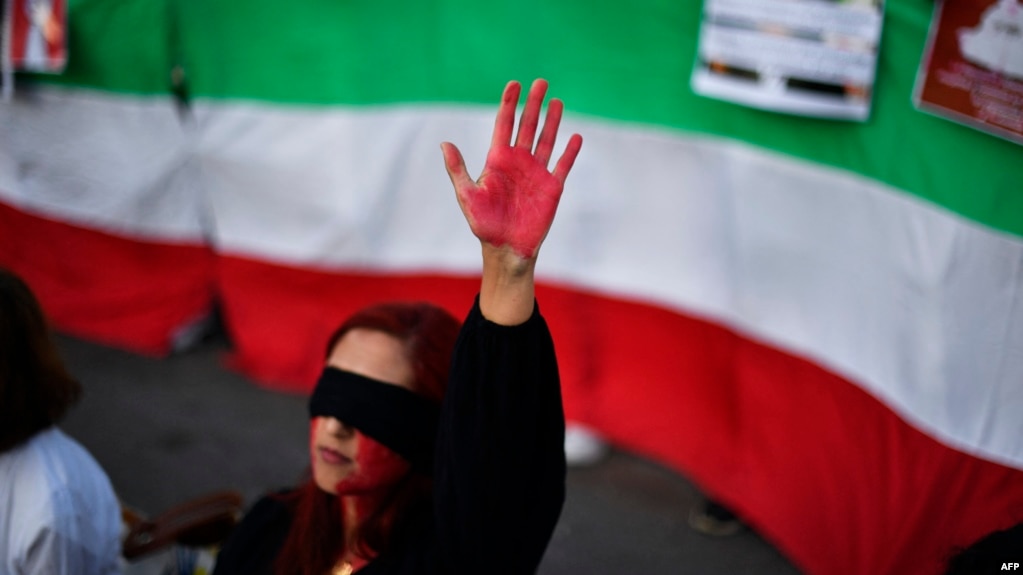
PARIS —
Concern grew on Wednesday over what caused the death of 16-year-old Nika Shahkarami who had joined the protests in Iran, even as the Iranian judiciary rejected accusations that she had been killed by security forces.
Reports from Persian media based outside Iran have said that the grieving girl's family were not allowed to bury her body in her hometown, while two close relatives have also reportedly been arrested.
Her aunt Atash Shahkarami wrote on Twitter that Nika went missing after attending a protest in Tehran on Sept. 20.
Ten days later the family was told that she had been found dead.
Protests across Iran, matched by solidarity marches in other countries, erupted in mid-September over the death of Mahsa Amini who had been arrested by the notorious morality police in Tehran.
Rights groups say that dozens of people have been killed in a crackdown by the Iranian security forces on the protests.
Media including BBC Persian and Iran Wire have said that Nika's family were permitted to see the body of Nika Shahkarami in a morgue but were not allowed to bury her in their hometown of Khorramabad in Lorestan province.
Instead, she was secretly buried by the authorities on Oct. 3, the date which would have marked her 17th birthday, in a village dozens of kilometers away from Khorramabad.
Footage published on social media, including by the New York-based Center for Human Rights in Iran, instead showed the family attending a protest in her memory in Khorramabad with her distraught mother declaring: "Today was your birthday, my dear!... Today I say, congratulations on your martyrdom!"
Images said to show her burial site in the village of Veysian show a dirty grave with a roughly cut headstone.
Relatives detained
Both Atash Shahkarami and an uncle have both been arrested, the reports said. Atash Shahkarami last tweeted on Oct. 2 with no activity since.
There are reports Nika Shahkarami had been held in Kahrizak prison outside Tehran, but this has not been confirmed by the Iranian authorities. When the family saw her body, her nose had been smashed and skull cracked, reports said.
BBC Persian reported on Monday that an autopsy report by the Behesht-e Zahra cemetery in the area had concluded she died due to multiple injuries sustained by being hit "with a hard object."
An investigation opened Wednesday into Shahkarami's death and eight people have been arrested in connection, according to the official IRNA news agency Tuesday.
But Iran's judiciary on Wednesday rejected any connection between the death of Nika Shahkarami and protests over the death of Mahsa Amini.
An autopsy showed "multiple fractures... in the pelvis, head, upper and lower limbs, arms and legs which indicate that the person was thrown from a height," state news agency IRNA quoted Tehran judiciary official Mohammad Shahriari as saying.
"No bullet marks were found... and the evidence shows that the death was caused by the person being thrown," he said, adding: "The incident has nothing to do with the recent disturbances."
Earlier, Tasnim news agency said eight people who were working in a building near the scene had been arrested in connection with Shahkarami's death.
Norway-based rights group Iran Human Rights (IHR) says at least seven women are among the more than 90 people killed by the Iranian security forces in the crackdown on the protests.
Zee News - 14h ago
Brussels: A European lawmaker cut off her hair during a debate in the Parliament to express solidarity with Iranian women amid the ongoing protest in the country, following the death of Mahsa Amini. Addressing the EU debate in Strasbourg, Swedish politician Abir Al Sahlani said, "We, the people and the citizens of the EU, demand an unconditional and immediate stop of all the violence against men and women in Iran." "Until the women of Iran are free, we will stand with you," Al Sahlani said as she cut off her hair using a pair of scissors in front of members of the European Parliament, according to a video she posted on her Twitter handle.

EU lawmaker cuts off her hair in support of hijab protests
More than 100 people have been killed in nationwide protests over the death of Mahsa Amini, according to the Norway-based group Iran Human Rights (IHR) NGO. Iranian schoolgirls and women have come out in huge numbers to demonstrate by removing their hijabs and staging rallies in protest over Amini`s death. Many women have even cut off their hair while chanting anti-government slogans.
Abir Al-Sahlani, a member of the European Parliament, pointed out that three weeks of continuous courage have been shown by the women of Iran. "They are paying the ultimate price for freedom with their lives."Enough of the press releases now, enough of the mumbling, it`s time to speak out, it`s time to act. The hands of the regimes of the mullahs in Iran are stained with blood. Neither history nor Allah of god almighty will forgive you for crimes against humanity that you are committing against your people," she added. Amini, 22, died in custody after being arrested by Iran`s "morality police" in Tehran on September 13 for allegedly violating the strict dress code.
She later fell into a coma shortly after collapsing at a detention centre and died three days later from a heart attack, according to authorities. Since her death, thousands have joined anti-government demonstrations throughout the country. Security forces have responded at times with live ammunition, and many people have been killed, injured and detained in the protests. Last week, the UN chief Antonio Guterres said he was becoming "increasingly concerned" about reports of the rising death toll. He said he had been following events closely, and he called on security forces to stop using "unnecessary or disproportionate force".
Breaking his silence on the protest, Iran`s Supreme leader Ayatollah Seyyed Ali Khamenei on Monday blamed the United States for the ongoing protest in the country. Speaking at a graduation ceremony in Tehran, Khamenei said he was heartbroken at the death of the 22-year-old girl in police custody. However, he did not approve of the large-scale demonstrations following the death of Amini."We were heartbroken, too.
But the reaction to this incident, while no investigation has been done and nothing has been certain, should not have been this that some people come and make the streets insecure, cause the people to feel unsafe, harm the security, burn the Quran, remove the hijab of a woman, burn mosques and hussainiyahs, and arson banks and people`s cars," he was quoted as saying by news agency IRNA.
Iran protests: Schoolgirls chant 'get out' and wave headscarves during IRGC official visit
Schoolgirls and young women have been in the vanguard of anti-government protests in Iran, sparked by the death in custody of Mahsa Amini

Screengrab from unverified film shows Iranian schoolgirls waving their headscarves and chanting 'get out' at a member of the IRGC (Twitter)
By MEE staff
Published date: 5 October 2022
Video has circulated on social media of girls in Iran waving their headscarves and chanting "get out" at a member of the Islamic Revolutionary Guards Corps (IRGC) during a talk at their school.
"Get out, Basij!" shout the pupils, referring to a faction of the IRGC which often enforces internal security in the country.
Protests have continued across the country over the death in custody of 22-year old Iranian Kurdish woman Mahsa Amini following her arrest by the "morality police" for an alleged "bad hijab".
Schools and university campuses have emerged as a key hub for the demonstrations, with clashes breaking out between students and security services.
In another video a group of girls can be seen chanting "Death to the dictator" and "woman, life, freedom" as they march down a street in the city of Karaj.
The Norway-based Iran Human Rights group reported that by 2 October, 133 people had been killed during three weeks of protests.
Iran's Supreme Leader Ayatollah Ali Khamenei on Monday gave his full backing to security forces confronting protests, comments that could herald a harsher crackdown to quell the ongoing unrest.
Although Khamenei said he was “deeply heartbroken” by the death of Amini, which he labelled a “tragic incident", he said the demonstrations and "rioting" had been "planned".
"These riots and insecurities were designed by America and the Zionist regime, and their employees," he told a gathering of police students, referring to Israel.
Iran protests: Schoolgirls heckle paramilitary speaker
A new video posted online appears to show schoolgirls heckling a member of Iran's feared paramilitary Basij force, after anti-government protests sweeping the country spread to the classroom.
The teenagers are seen waving their headscarves in the air and shouting "get lost, Basiji" at the man, who had reportedly been asked to speak to them.
The Basij's volunteers have helped authorities crack down on the protests.
They erupted after the death of a woman detained for breaking the hijab law.
Other footage circulated on social media seems to show an elderly woman clapping as unveiled schoolgirls, also dressed in black uniforms, chant "freedom, freedom, freedom" at a protest on a street.
In a third video, reportedly filmed in the city of Karaj, schoolgirls are seen screaming and running from a man, thought to be a member of the security forces in plainclothes, who is driving a motorcycle along a pavement.
The unrest was triggered by the death of Mahsa Amini, a 22-year-old woman who fell into a coma hours after being detained by morality police on 13 September in Tehran. She had allegedly failed to cover her hair sufficiently. She died in hospital three days later.
Her family has alleged that officers beat her head with a baton and banged her head against one of their vehicles. The police have denied that she was mistreated and said she suffered a heart attack.
The first protests took place in north-western Iran, where Ms Amini was from, and then spread rapidly across the country.
Young women have been at the forefront of the unrest, but it was not until Monday that schoolgirls began participating publicly in large numbers.
It came a day after security forces briefly besieged the prestigious Sharif University of Technology in Tehran in response to a protest on the campus. Dozens of students were reportedly beaten, blindfolded and taken away.
Monday also saw the Supreme Leader, Ayatollah Ali Khamenei, break his silence on the unrest and accuse the US and Israel, Iran's arch-enemies, of orchestrating "riots". He also gave his full backing to the security forces, which have been accused by human rights groups of killing dozens of people.
On Tuesday, there were reports that the death toll resulting from clashes between security personnel and anti-government protesters in the south-eastern city of Zahedan had risen to 83.
Zahedan is the capital of Sistan Baluchistan province, which borders both Pakistan and Afghanistan, and has a sizeable Sunni Muslim population.
Authorities have said the security forces were attacked by armed Baluchi separatists - something the imam of the city's biggest mosque has denied.
The violence erupted on Friday, when protesters surrounded a police station and officers opened fire.
Tensions in the city had been compounded by the alleged rape of a 15-year-old girl by a police chief elsewhere in Sistan Baluchistan
Hadis, Minoo and Ghazaleh: the women victims of Iran's crackdown
Stuart Williams
Tue, 4 October 2022

"I am really hoping that in some years from now, after everything has changed, I will be happy to have been involved by taking part in this protest," Iranian woman Hadis Najafi, 22, said in a self-recorded video as she prepared to take to the streets.
Shortly after recording the message to her phone, Najafi was killed while participating in a street protest on September 21 in Karaj, outside Tehran.
According to Amnesty International, she was shot by security forces several times at close range, with birdshot wounds to the face, neck and chest.
Najafi was one of dozens of people who rights groups say have been killed in the Iranian security forces' crack down on protests that erupted over the death of Mahsa Amini in morality police custody.

The protests have broken taboos in Iran, with slogans shouted against the regime and women removing their headscarves. But security forces have hit back with a lethal force that Amnesty says raises concerns of an intent to kill demonstrators.
In a video recorded by her grieving family, Najafi's sister showed the backpack, covered in blood, that was recovered after she was shot.
"It was because of Mahsa Amini that she stood up tall and went out," she said. "We lost Hadis and we are not afraid of anything."
Her distraught mother added: "My daughter was murdered for hijab, for Mahsa Amini. She lost her life for Mahsa. She wanted to keep Mahsa's name alive."
- 'At the forefront' -

Norway-based group Iran Human Rights (IHR) says over 90 people have been killed in the crackdown, including seven women, while Amnesty says it has confirmed 52 names of those killed, including five women, one girl and five boys.
The women killed had no previous experience of political activism and, according to relatives, went to the streets for a movement that they believed offered an unprecedented glimpse of hope.
"Women have been at the forefront of this movement and the very first protest was organised by Kurdish women," Roya Boroumand, executive director of the Washington-based Abdorrahman Boroumand Center, told AFP.
The funeral of Amini, an Iranian Kurd, in her home town of Saqqez in Kurdistan province, was marked by the initial protests as women took off their headscarves in defiance of the Islamic republic's strict dress rules.
"And they (the security forces) have killed with no hesitation. They did not even wait for the movement to get out of control to shoot," Boroumand added.
Minoo Majidi, 62, was killed by a shot fired by security forces during a protest on September 20 in the Kurdish-populated city of Kermanshah in northwestern Iran, according to the Norway-based Hengaw rights group.
In a striking image of defiance, one of Majidi's daughters posed beside her mother's flower-covered grave bare-headed, dressed in black with a white scarf around her neck, according to an image that has gone viral on social media.
Her hair was cropped to the skull and in her left hand she held the long locks of hair she had cut off, an apparent tribute to her mother and Mahsa Amini.
Ghazaleh Chelavi, 32, a keen mountain climber, was shot and killed on September 20 in the northern Caspian Sea city of Amol, according to social media channels, which published harrowing footage of the distress of her family at her funeral.
Hannaneh Kia, 23, was killed the same day in the city of Nowshahr, according to family sources and activists. Amnesty reported that two friends had said she was shot on her way home from a doctor's visit.
- 'They will keep shooting' -
Activists say nearly all the victims died after being shot at close range.

But Sarina Esmailzadeh, aged just 16 and like Hadis Najafi also from Karaj, died as result of blows to the head when security forces beat her with batons on September 23, according to Amnesty.
It also alleged that in a frequently used tactic, Iranian security and intelligence agents have subjected the girl's family to "intense harassment" to coerce them into silence.
Nika Shahkarami went missing on September 20 after heading out to join a protest in Tehran, two weeks before she was due to celebrate her 17th birthday, her aunt Atash Shahkarami wrote on social media.
Her family was finally allowed to see the body on October 1 and were due to bury her in her home city of Khorramabad in Lorestan province on what would have been her 17th birthday, Atash Shahkarami wrote.
But both BBC Persian and Iran Wire reported that the authorities had taken possession of the body and secretly buried it on Monday in another village, to avoid a funeral that could spark a protest.
Meanwhile, Atash Shahkarami was herself arrested, the reports said. She has been inactive on social media since October 2.
"This is not the end. They will keep arresting people and keep shooting as long as people take to the streets. And people have no other venue to express dissent," Boroumand said.
sjw/js/fz/lg
What Iranian Women Have Done and Are Doing!
Wednesday, 5 October, 2022 - 09:45
Hazem Saghieh
“The revolution is female” – a slogan that has been raised in Arab cities over the past five or six years. To a certain extent, it was correct. Indeed, women took to the streets, chanted, protested, clashed, and sacrificed.
This happened in Beirut, Khartoum, Baghdad and other Arab cities. The Arab revolutions that unfolded before them had given rise to iconic women who confronted, sang, wrote, and were imprisoned and kidnapped.
However, the revolutions of our region that had monopolized the term “revolution” for a long time were not female in the slightest. Revolution was a male, rather, a hyper-masculine male.
The most important of those revolutions, the Algerian revolution, saw women take part in the fight against the French colonizers alongside the men. Djamila Bouhired, Zahra Zarif, Samia Lakhdari, Malika Gaid, Meriem Bouatoura, Zubaida Walad Qablia and Warida Madad were the names of a few of them. However, as has become well known, the women and children were sent back to their homes as soon as the revolution was victorious and independence was declared. Some of the worst aspects of the set of laws governing Algerians during colonialism, Le Code de l’Indigénat, were maintained, and until at least 1984, when the Family Code was introduced, not much had changed. At the time, Algerian feminists took to the streets, protesting and demonstrating in the face of immense repression.
Algerian jihad only had room for men jihadists.
In the Palestinian revolution, exclusive male symbols shined brightly: The nickname “abo” (father of) preceded the names of 95 percent of the revolution’s leaders. It is a revolution of fathers, most of whom added thick beards, a hallmark of ‘Third World’ revolutions and revolutionaries, to their fatherhood. Fidel Castro and Che Guevara were the most famous, but they were not alone in this regard. Those who were not lucky enough to be able to grow beards thickened their mustaches to compensate and keep up with the trend.
Military and security regimes called themselves revolutions, and in Baathist Iraq and Syria, “women’s organizations” dressed in military uniforms were brought to attend festivities celebrating the immortal leader. Muammar Gaddafi “honored women” by turning them into personal guards in his entourage.
As for the Khomeinist revolution in Iran, it enshrined the victory of tough men over women, with no going back. After having been an earthly demand, this victory has become a celestial demand as well. The grandfather sat on the chests of his grandchildren, especially his granddaughters.
Masculine qualities totally overwhelmed value systems throughout this journey: militant, jihadist, martyr, brave, honorable… They are the stars of this world and the next. The exemplary mother is one who tenderly gazes into the eyes of her son, offers him a cup of tea or milk, and bursts into tears as she wishes him well before he goes off to die.
“The most beautiful of mothers” on the face of the earth are those who “awaited their sons and saw them return as martyrs,” as the poem that became a song goes. As for what reinforced these value systems, it is that softness, effeminacy, and other condemned traits were linked to the West, its “imitators,” and its “followers.” Foreign words slip off their tongues with ease, they have coquettish nicknames, and they struggle to pronounce the words of the pre Islamic poet Al-Shanfara!
This nonsense was dealt its hardest blow in Iran, where we are seeing the most substantial and broadest reconciliation between women and revolution. Because the revision there is of historic proportions, it seemed and seems more like an international celebration of the women of our planet that even Afghanistan cannot avoid. In contrast to our old and narrow conceptualization of revolution, Tehran is announcing that the right to control one’s body, choose one’s clothes, and listen to music are also revolutionary demands.
It is not a minor detail that woman is the symbol of revolutionary action in Iran and that the image of revolution has become an image of women. If it is true that the crises and suffering particular to Iranian women have played a role in bringing about this transformation, it is also true that the women of Iran are not fighting a war against imperialism or any of its equivalents. That is precisely wherein lies the biggest difference between the revolutions of the past and this revolution, which seeks to attenuate these causes or walk back on them, starting from the slogan launched in 2009: “neither Gaza nor Lebanon, I sacrifice my life for Iran.”
Just as the homeland prevails over the cause, the present prevails over the past, regardless of how it is interpreted. In this context, there is no hiding irony of the women’s revolution “demanding the ordinary” while the ruling regime is busy with the nuclear deal negotiations and consolidating its influence in Iraq, Lebanon, Gaza, and Yemen.
This is said because the old revolutionary masculinity had, in the first place- and just as the relationship with Europe was beginning- fed off of questions of identity and conflict. Even Hoda El Shaarawy, the early feminist pioneer, fell into this trap. Commenting on her attendance at an international conference in Rome in 1923, she stressed that she had not gone with the aim of “demanding the abolition of polygamy, changes to courtship system, or the imposition of restrictions on divorce for men.”
Instead, there are other aims, the first of which is “presenting Egyptian women in their true, unchanging from, to Western women, who know nothing about them or know what they have learned from the skewed information about Egyptian women they read in books written by those with colonial agenda (...) and demonstrating that the modern Egyptian woman is almost equal to her Western sister in her civility and that the Islamic religion has granted her rights that Western women would like to have.”
The path taken by Iranian women is certainly not paved with roses, and there are fears that should not be overlooked, the most important of which is the regime succeeding in repressing or militarizing the revolution. However, Iranian women are undoubtedly posing the question properly for the first time. The answer is another matter.
Published: October 05, 2022 16:27AFP
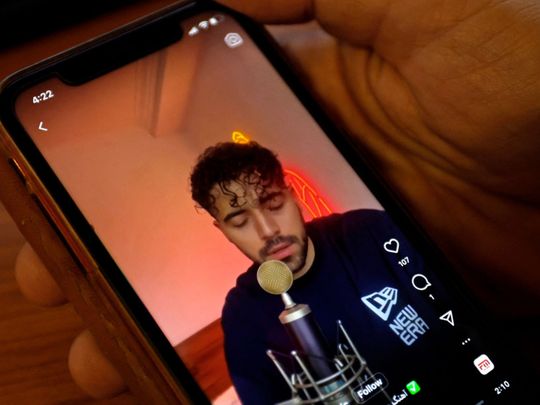
NICOSIA: Even though he has been silenced, Iranian pop singer Shirvin Hajipour’s impassioned song in support of protests over Mahsa Amini’s death in custody remains an unofficial anthem of the movement.
The song “Baraye” notched up 40 million views on Instagram before it was deleted when Hajipour was arrested, but he has since been freed on bail and has distanced himself from politics, likely as a condition for his release.
Baraye, the Persian word “For” or “Because”, is composed of tweets about the protests and highlights longings people have for things lacking in sanctions-hit Iran, where many complain of hardship caused by economic mismanagement.
It also draws on everyday activities that have landed people in trouble with the authorities in the Islamic republic.
“For the sake of dancing in the streets; Because of the fear felt while kissing; For my sister, your sister, your sisters,” the song’s lyrics say.
“Because of the embarrassment of an empty pocket; Because we are longing for a normal life... Because of this polluted air.”
Baraye has been heard played loudly at night from apartment blocks in Iran to show support for protests sparked by Amini’s death on September 16, after the notorious morality police arrested her for allegedly breaching rules requiring women to wear hijab headscarves and modest clothes.
It was also sung with gusto by the Iranian diaspora at rallies in more than 150 cities around the world at the weekend.
In one clip shared by the New York-based Center for Human Rights in Iran, a group of schoolgirls without headscarves is seen singing Baraye in class with their backs to the camera.
The tune was removed from Hajipour’s Instagram account shortly after his arrest but is still widely available on other social media platforms, including Twitter and YouTube.
‘Because of forced Instagram stories’
Hajipour’s lawyer Majid Kaveh said he was released on bail at noon on Tuesday.
The reformist Shargh newspaper said his family had been informed of his arrest in the northern city of Sari on Saturday, in a report that cited his sister Kamand Hajipour.
She had said in an Instagram post that her parents had been informed of his arrest in a call from the city’s intelligence ministry offices.
Shortly after his release, Hajipour was back on Instagram, but this time to apologise and distance himself from politics.
“I’m here to say I’m okay,” he told his 1.9 million followers on the platform.
“But I’m sorry that some particular movements based outside of Iran - which I have had no relations with - made some improper political uses of this song.
“I would not swap this (country) for anywhere else and I will stay for my homeland, my flag, my people, and I will sing.
“I don’t want to be a plaything for those who do not think of me, you or this country,” he added.
In response to his post, many on Twitter suggested the line “Because of forced Instagram stories” should be added to the lyrics of the song.
Human rights groups including Article 19 have repeatedly called on Iran to end its use of forced confessions, which they say are false and extracted under duress or even torture.
In one recent case, a young Iranian woman, Sepideh Rashno, disappeared after becoming involved in a dispute on a Tehran bus with another woman who accused her of removing her headscarf.
She was held by the powerful Islamic Revolutionary Guard Corps and appeared on television in what activists said was a forced confession before being released on bail in late August.
Yesterday
(Reuters) - Iranian-born Hollywood actress and activist Nazanin Boniadi said more has to be done to protect the rights of women in Iran as security forces crack down on protests sparked by the death of Mahsa Amini in police custody.

Freedom Rally for Iran Mahsa (Zhina) Amini at Los Angeles City Hall© Reuters/BING GUAN

Protest in support of Iranian women and against the death of Mahsa Amini in Barcelona© Reuters/NACHO DOCE
Amini, 22, died in September after being arrested by morality police for "unsuitable attire", sparking protests that have spiralled into the biggest show of opposition to Iran's leadership since 2019.
Security forces have been leading a crackdown on the protests, with thousands arrested, hundreds injured, and over 100 killed, according to rights groups.
Speaking to Reuters in Los Angeles, the Amnesty International ambassador said Amini's death has struck a chord internationally and she called on world leaders to do more to hold Iranian authorities accountable.
"I think the death or the killing of Mahsa Amini in custody in Iran has struck at the core of everything we feel about our rights being taken away from us, how fragile our freedoms can be," said Boniadi, 43.
"So it's hit a chord ... in the global zeitgeist of people feeling like they can relate to what it feels like to have your rights taken away from you. And particularly, I think, women's rights."
The star of Amazon's "Lord of the Rings: The Rings of Power", who fled Tehran with her family when she was just 20 days old, has been a prominent voice in the anti-regime campaign since Amini's death.

Demonstrators take part in a protest following the death of Mahsa Amini, in Istanbul© Reuters/MURAD SEZER
On Saturday, Boniadi led a protest in Los Angeles against the Iranian government, with organisers saying 20,000 people turned up to show their support. There have been similar protests across Europe and in Canada, in solidarity with the women making a stand in Tehran and elsewhere in Iran.
"Here you have these women who are on the front lines, and they are likely to get beaten at the very least, if not killed and imprisoned. And yet they're doing it anyway," said Boniadi, visibly emotional.
"They're fighting with all they have. The problem is that we need to stand by them... Every country, every member state of the U.N. needs to actively work towards creating this international mechanism for accountability on Iran."

People take part in a protest following the death of Mahsa Amini, in Istanbul© Reuters/MURAD SEZER
Iranian authorities have insisted Amini died from a sudden heart failure, possibly from pre-existing conditions. Her family has denied she had any previous health issues.
(Reporting by Sandra Stojanovic and Phil Lavelle; Writing by Ana Nicolaci da Costa; Editing by Neil Fullick)
Oscar winners cut off their hair
in support of protesters in Iran
5 October 2022,

Charlotte Gainsbourg and her mother Jane Birkin took part in a protest video featuring stars such as Marion Cotillard and Juliette Binoche.
Oscar-winning actresses Marion Cotillard and Juliette Binoche and other stars including the UK’s Charlotte Rampling, Charlotte Gainsbourg and singer Jane Birkin have filmed themselves cutting off locks of their hair in support of protesters in Iran.
Their video, released on Instagram and hash-tagged HairForFreedom, comes as Iran is engulfed by anti-government protests following the death in custody of 22-year-old Mahsa Amini after her arrest for allegedly violating the Islamic Republic’s strict dress code.
Protests in Iran and other countries including Turkey, Lebanon and France have seen women cutting off their hair in a show of solidarity.
Binoche said: “For freedom” in the video, as she hacked off a large handful of her hair.
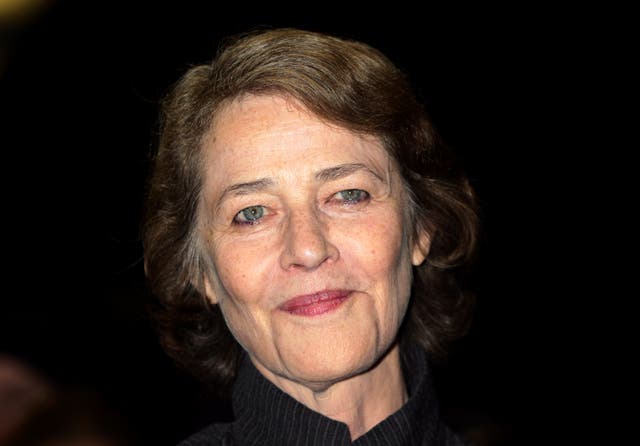
Dozens of women famous in France and across the wider world took part.
Gainsbourg was filmed cutting the hair of her mother, Birkin.
The video appeared on an Instagram account, “soutienfemmesiran”, which translates as “support women in Iran”.

A post on the video read: “These women, these men are asking for our support. Their courage and their dignity obliges us.
“We have decided to respond to the appeal made to us by cutting – us too – some of these locks.”
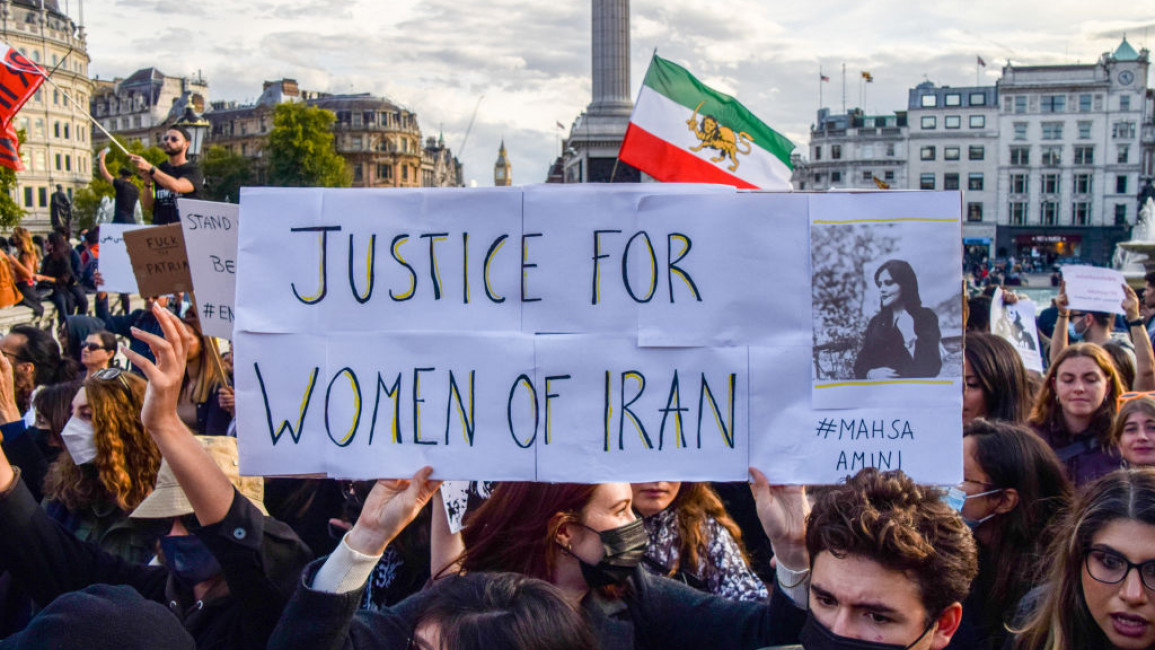

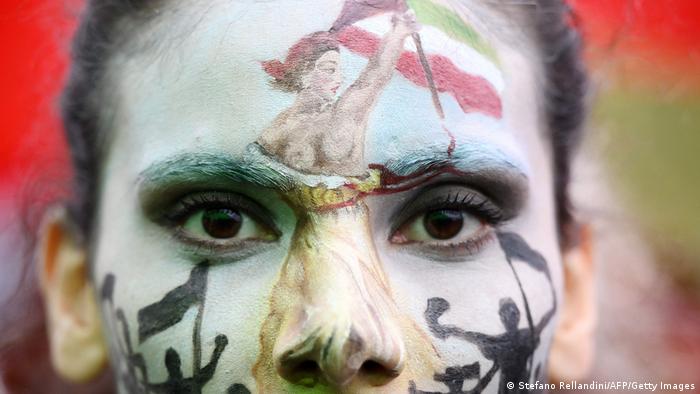
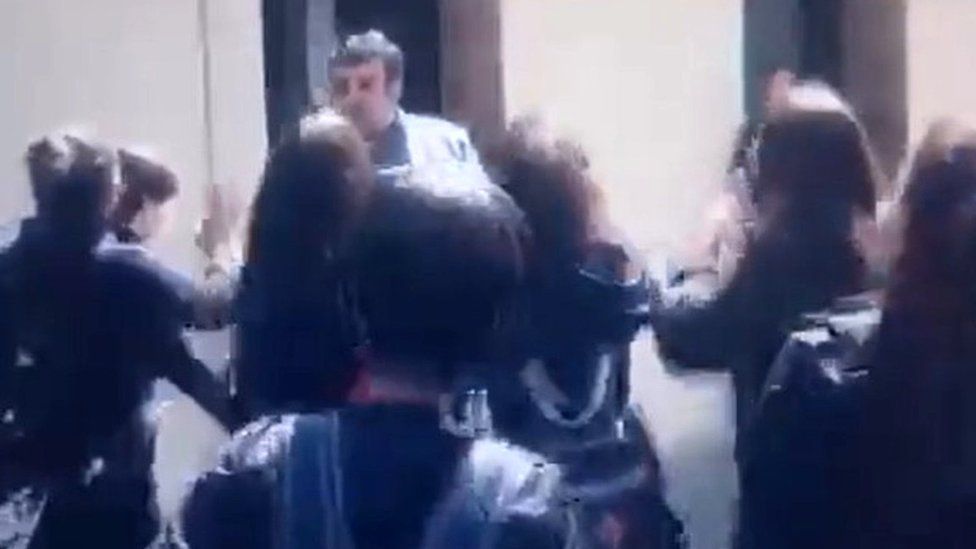
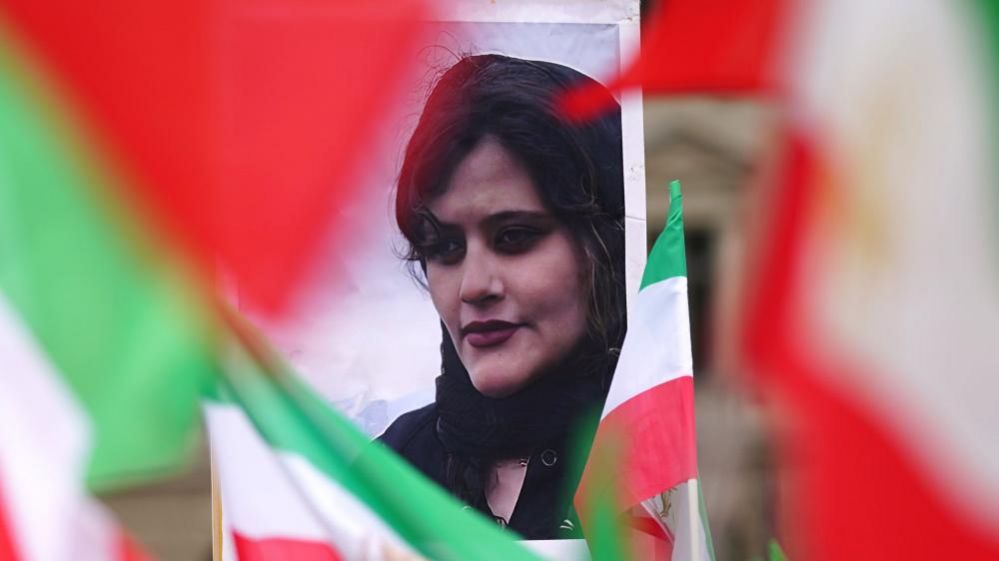
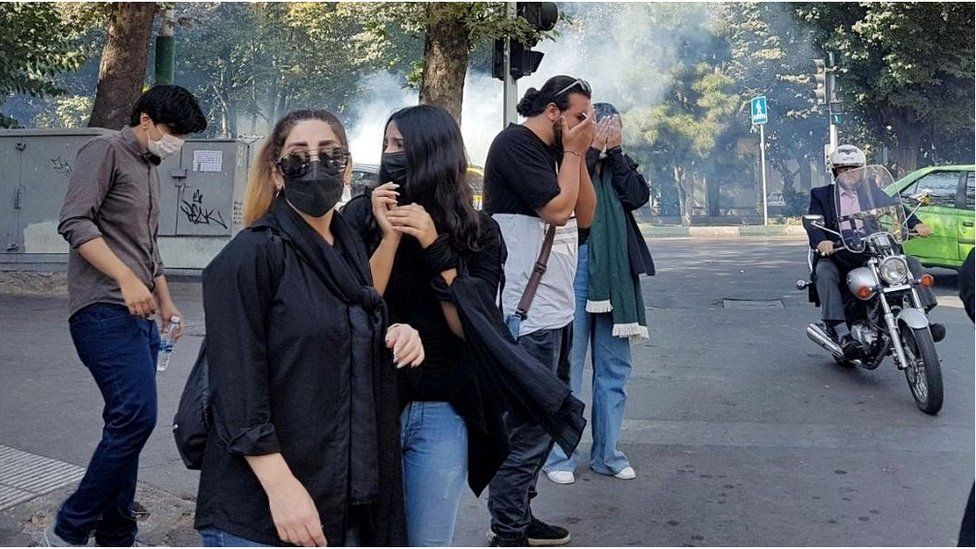
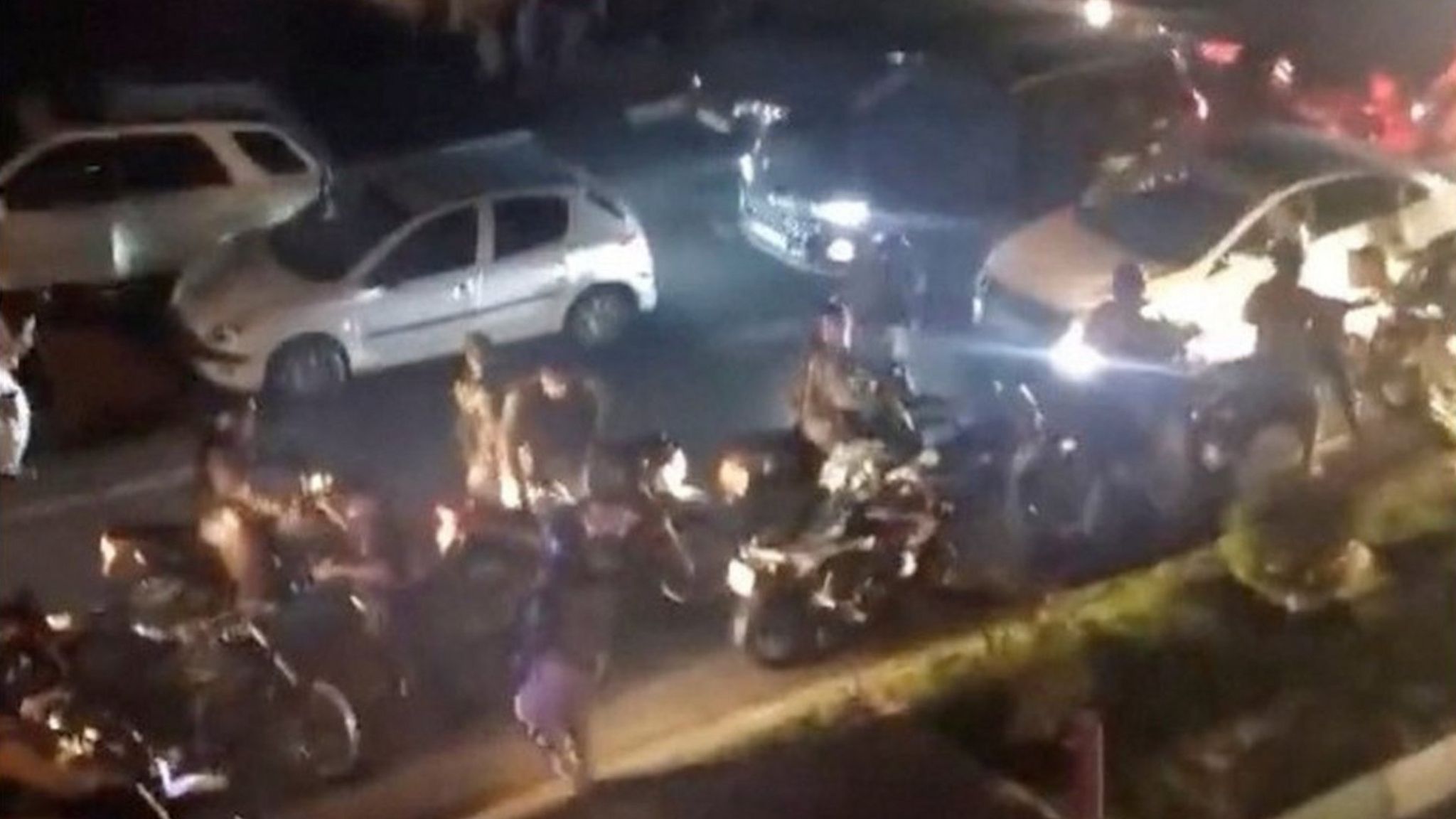
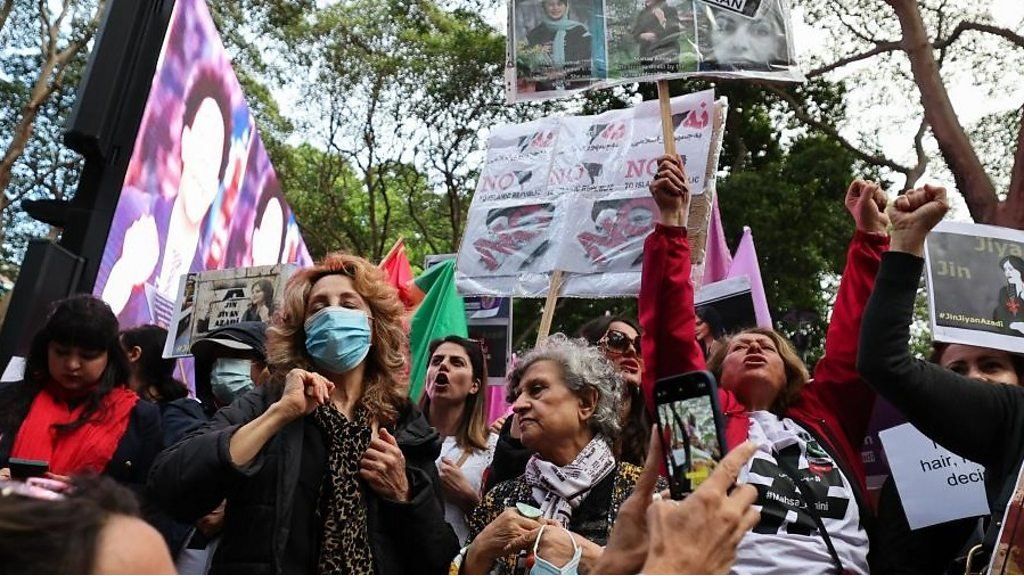

No comments:
Post a Comment